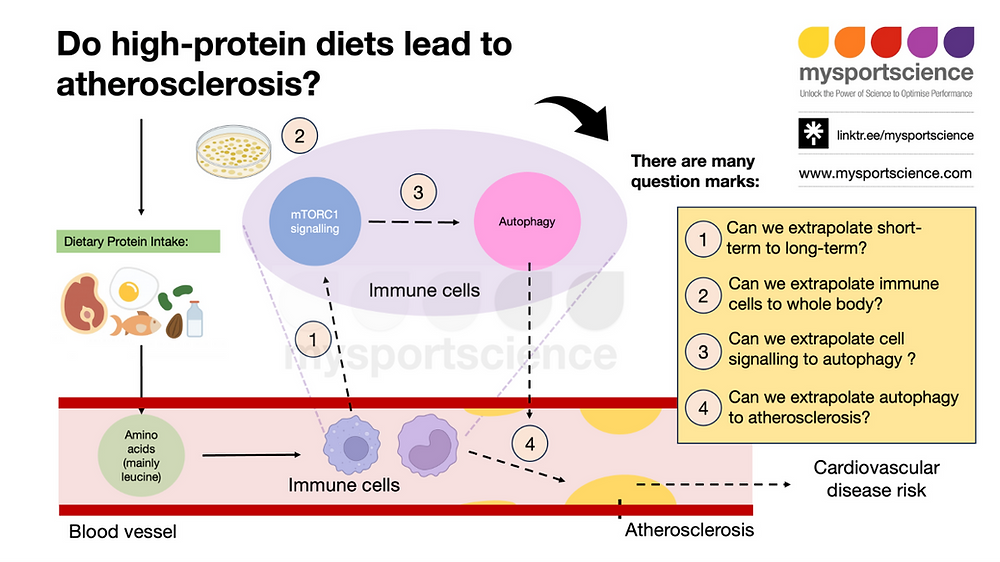Protein remains a pivotal focus in the discourse surrounding endurance nutrition, primarily due to its role in muscle repair and adaptation. While the standard narrative underscores the advantages of sufficient protein intake in fostering recovery and enhancing performance, recent studies have sparked concern regarding its potential association with cardiovascular disease (CVD) risk. Understanding these dynamics is particularly crucial for endurance athletes who push their physiological limits during prolonged training and racing.
Recent research has highlighted a nuanced interaction between protein consumption and metabolic signaling pathways that could impact cardiovascular health. Specifically, a study found that high protein intake activates mTORC1 signaling in immune cells, which could theoretically contribute to atherosclerosis—an accumulation of plaque in arteries that poses a risk for heart disease. For athletes, this raises questions about the timing and quantity of protein intake, especially following long-distance workouts or races when muscle repair and recovery are paramount.
When considering nutrition timing, post-exercise recovery is critical. Athletes are often advised to consume protein shortly after training to optimize muscle repair. However, the recent evidence linking protein to increased mTORC1 activity invites scrutiny of how the type and amount of protein consumed immediately after exertion might influence long-term cardiovascular health. While higher protein intake seems beneficial for muscle recovery and development, striking a balance becomes essential when integrating it into a long-term nutrition strategy.
Gut tolerance is another significant factor. For those training under challenging conditions, such as heat and altitude, an athlete’s ability to digest and absorb nutrients effectively can become compromised. Many carbohydrate and protein supplements can challenge gastrointestinal stability during prolonged exertion. Athletes must therefore consider that quantities and sources of protein might not only influence recovery outcomes but could also become impediments to performance if not matched with individual tolerances. Testing various protein sources in training can help identify the most effective types that minimize digestive distress and optimize recovery.
Hydration and metabolic efficiency interplay with protein consumption as well. Adequate hydration supports protein metabolism and overall recovery, impacting muscle adaptation to training loads. However, compromising hydration status can slow recovery processes. Athletes must manage their fluid intake carefully during long sessions to ensure efficient metabolic pathways remain active and responsive, encouraging effective nutrient utilization.
Fueling strategies during endurance events typically focus on carbohydrates, but the role of protein should not be undervalued. Some studies indicate that consuming protein alongside carbohydrates during long exercises can enhance endurance performance and reduce muscle breakdown. Athletes should consider strategic opportunities to incorporate protein into their fueling plans, particularly in events lasting over three hours whereby muscle protection and energy sustenance are critical.
Regarding recovery optimization, the post-training window is crucial—not just for protein but also for the synergistic effect of consuming protein with carbohydrates. This combination can amplify glycogen resynthesis and enhance overall recovery. However, with newer insights suggesting potential cardiovascular implications, athletes might benefit from varying their protein sources, integrating more plant-based proteins, which have shown different effects on CVD risk compared to animal sources. This variation might not only be advantageous for cardiovascular health but also introduce diverse amino acid profiles beneficial for muscle repair.
Ultimately, the conversation around dietary protein and cardiovascular health is ongoing, and while the acute effects observed in studies present a compelling narrative, long-term implications remain to be thoroughly explored. There’s a distinct opportunity for endurance athletes to remain informed on these developments and adjust their nutrition practices accordingly. As the link between high protein intake and CVD risk is not yet fully established, many endurance athletes can focus on a balanced approach that prioritizes recovery and performance without excessive concern over potential risks—doing so while considering the type, timing, and gut tolerance of protein.
One practical takeaway for endurance athletes is to monitor their protein sources and intake around training sessions. Strive for a balanced mix of both animal and plant-based proteins, perhaps focusing on protein from whole food sources in a post-exercise meal rather than relying solely on supplements. This practice may not only support robust recovery and muscle adaptation but also promote long-term health.
